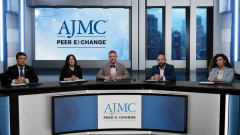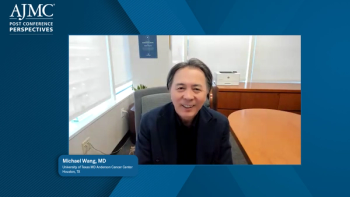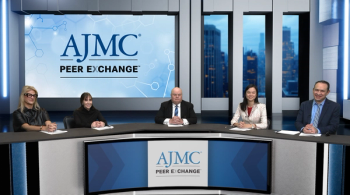
Educating on Menin Inhibitors
Panelists emphasize that effective use of menin inhibitors for KMT2A-rearranged acute myeloid leukemia (AML) requires dispelling common misconceptions about oral targeted therapy, ensuring close monitoring for adverse effects, clarifying treatment goals—especially the role of transplant—and supporting patients through comprehensive education and multidisciplinary care.
Episodes in this series

As menin inhibitors emerge as promising therapies for patients with KMT2A-rearranged AML, there are several misconceptions clinicians must frequently address. One common misunderstanding is the perception that a targeted oral therapy is inherently less effective than traditional chemotherapy. Some patients, and even providers, equate aggressive disease with the need for intensive treatment, and may view a pill as a sign of treatment de-escalation or futility. On the flip side, others may overestimate the ease of use, believing that these “smart drugs” require little to no monitoring. This makes thorough patient and caregiver education essential from the outset.
Close communication and proactive management are key to optimizing outcomes with menin inhibitors. Patients must be counseled about possible adverse effects like differentiation syndrome, QTc prolongation, and cytopenias—especially in the early treatment phase. Routine follow-ups, sometimes multiple times a week, are necessary to monitor for toxicity and reinforce adherence. Clinical teams often rely on multidisciplinary support, including pharmacists, advanced practice providers, and nurse coordinators, to reinforce this messaging and ensure patients feel supported outside the clinical setting.
Another critical area of patient education is clarifying the treatment intent. Targeted therapies like menin inhibitors are not curative on their own; they are typically used as a bridge to allogeneic stem cell transplantation. Patients need to understand that sustained remission and potential cure often depend on progressing to transplant when feasible. Drug-drug interactions also require careful attention, particularly in patients on antifungal prophylaxis or other CYP inhibitors, which necessitate dose adjustments. Ultimately, a collaborative care model and ongoing education can mitigate misconceptions and empower patients to remain adherent and engaged in their treatment plan.
Newsletter
Stay ahead of policy, cost, and value—subscribe to AJMC for expert insights at the intersection of clinical care and health economics.








